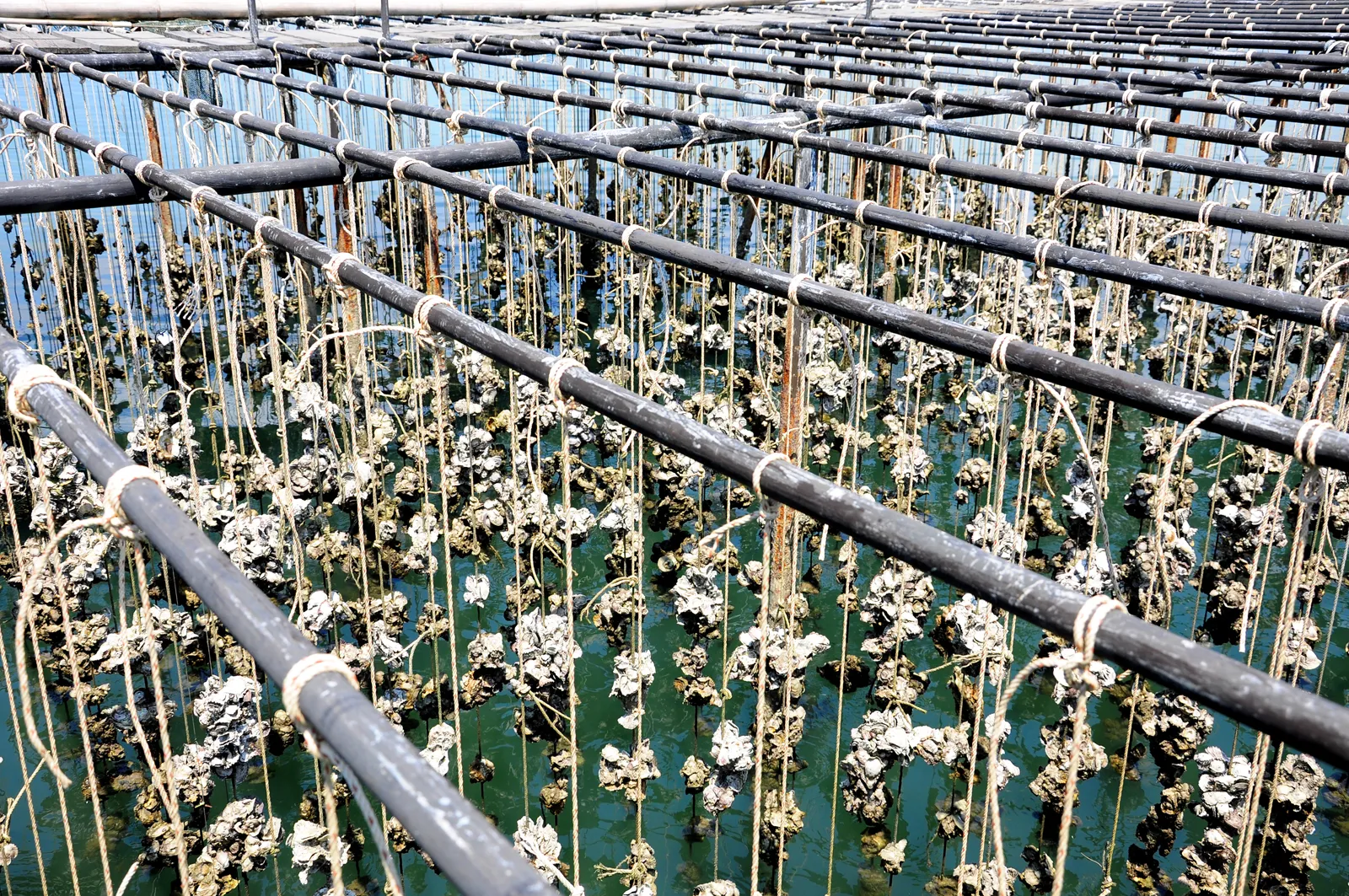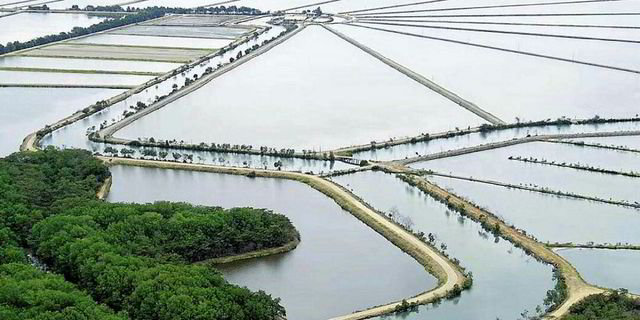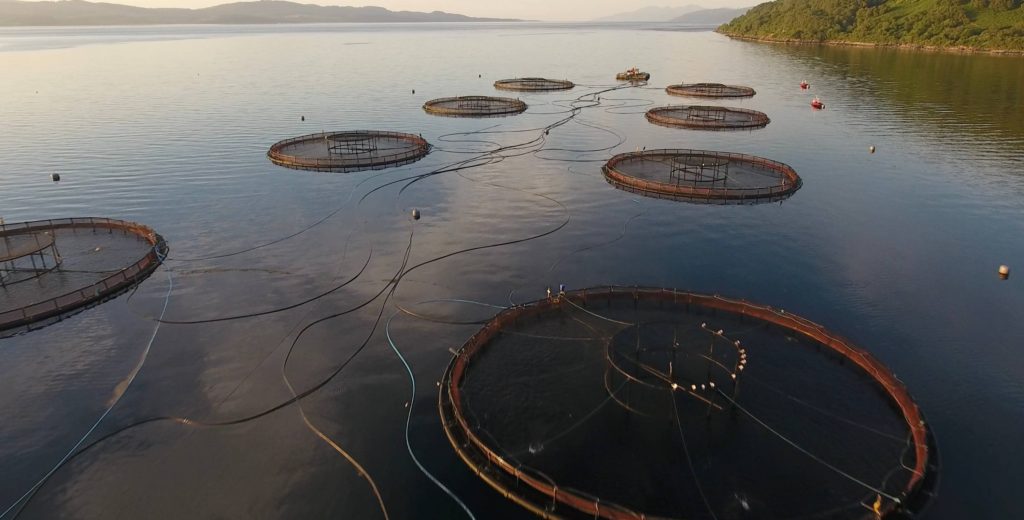By Janya Edirisinghe
Mariculture, commonly known as marine farming, is a specialised subset of aquaculture, that is practiced in seawater habitats and lagoons as opposed to in freshwater aquaculture. Fish like sea bream, cod, halibut, and sea bass are examples of products cultivated through mariculture. It accounts for about 40% of the world’s aquaculture production. Countries such as China, Japan and Indonesia are some of the top mariculture-producing countries.

What are the types of Mariculture?
Mollusk Culture
Clams, oysters, scallops, and mussels are popular sea animals that can be farmed in regions with temperate climates. The process of mariculture involves initially collecting larvae from natural habitats or artificially fertilized larvae grown in hatcheries. Usually, parents are captured and taken to spawn their children in captivity.
Then, the larvae are taken to a different location to grow where hanging culture is practised, where they can grow suspended on strings, trays, stacks or mesh bags that hang from long lines floating in the water.
A few other methods of growing molluscs include vertical/rack culture, where they grow directly on sticks staked into the ground or on racks upheld by posts and bottom culture in which clams, for example, grow on shells, rocks or cement slabs on the sea floor. Also, molluscs such as abalone are grown in tanks.
Crustacean culture
Shrimp are mostly grown in tropical regions. Initially, the babies are grown in hatcheries, and they are then taken to grow in ponds, concrete raceways, and tanks. The shrimp ponds used to be located in rice fields and mangrove forests all around the world, but the subsequent destruction of mangrove areas has encouraged farmers to grow shrimp in inland ponds filled with transported seawater instead.

Marine Plant Culture
Most marine aquatic plants such as seaweed are grown in temperate regions. The plants used for breeding are originally sourced from their natural environment. Most farmed plants tend to be grown in hatcheries and once they reach a certain life stage, the plants are transferred to grow sites where the young plants are grown attached to suspended lines or floating rafts, in bottom cultures anchored to the sea floor and in inland tanks, similar to the way that molluscs are grown.

Finfish culture
Finfish are farmed in both temperate and tropical regions. Their defining feature is that they have fins and an example of a finfish includes salmon, which is also an example of a diadromous fish and these are the types of fish that migrate between the ocean and freshwater. Marine farming involves raising these diadromous fish.
Farmed finfish are first born in hatcheries and are then put into tanks and transferred to growth sites after the fertilised eggs hatch.
Finfish can be grown in pens, cages and large tanks. Pens are anchored to the sea floor in shallow waters. Cages can be located inshore or offshore. Inshore cages are usually in shallow waters with more protected areas that have less water circulation compared to offshore cages that are in deep water which has better water circulation and more exposure to storms.
The fish can also be grown in ponds that feature canals and dikes to help supply and drain water from pond compartments. Recirculating systems are used to control the water supplied to these ponds and factors such as temperature, as well as physical and chemical properties are taken into consideration.
Finfish are also subject to methods of growing called enhancement and ranching. At the inception, the fish are released at a young age to help restock free-living populations. Afterwards, the fish are captured in open waters that are artificially enclosed. Sea ranching is a method of mariculture that is also used to grow molluscs, crustaceans, marine plants and other marine organisms.

Over time, the raising of fish in cages close to the shore or in bays has caused severe ecological issues including contamination, disease, increased fish mortality, and severe damage to marine ecology, quality of the environment, and tourism.
To conclude, although world fish production from capture fisheries levelled off during the 1990s, demand for seafood continues to increase rapidly. This is because of the growth of the human population and the widespread view that seafood is healthy food. Scientists believe that the natural products from the ocean will not increase so to meet the rise in demand for seafood, both mariculture and fresh-water aquaculture will have to increase significantly. However, while several species are being reared successfully by marine culturists, various desirable species such as crabs and lobsters are very difficult to rear due to their life cycles being difficult to control under culture conditions or simply because they are way too complex.
Header Image: A fish farm off the coast of Greece. Photo by Artur Rydzewski
Leave a Reply Cancel reply
You must be logged in to post a comment.
